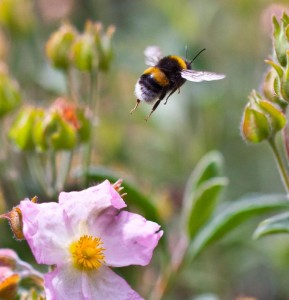FRIDAY, 5 OCTOBER 2012
Mathieu Lihoreau and colleagues from the University of Sydney used radar and motion-sensitive cameras to track bee movement between flowers, and compared it with computer simulations of route optimisation by a learning algorithm. The learning algorithm and bee behaviour matched, showing that bees tried only 20 of 120 different possible routes to establish optimum routes called 'traplines'.How do they do it? Bees identify flowers by visual landmarks or panoramas, and combine these visual cues with memories of flight routes.
Bees quickly learn their flight routines by memorizing the length of the shortest route they experienced and comparing it with the current route being travelled. If the new route is shorter, the previous route is replaced, and positive feedback reinforces the memory, while other routes are ‘forgotten’.
When the location of a flower is changed, bees make targeted search flights to discover the new flower and integrate it into a new optimal trapline.
Programmers are now looking for ways to mimic bumblebee navigation to help robots find their way in unknown terrain.
doi:10.1371/journal.pbio.1001392.g001
Written by Chris Creese.

